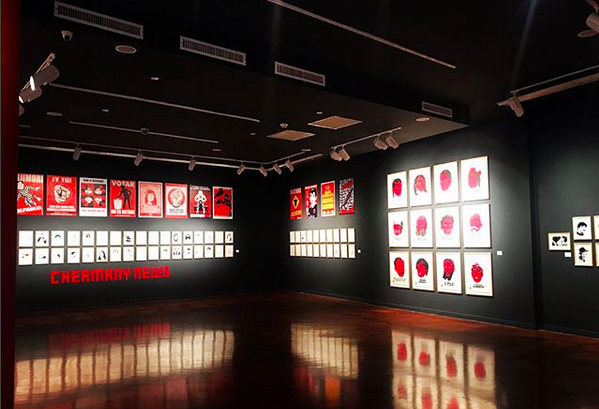ODE TO PERUVIAN POP CULTURE THROUGH CHERMAN QUINO’S SOLO SHOW AT ICPNA
From June 29 to July 28, the Peruvian and American Cultural Institute (ICPNA), in Peru, presents an individual exhibition of the popular artist, Cherman. Peruvian Selfie is a self-portrait of Peruvian popular culture, not just by way of illustration , but also for celebration. The exhibition is at the ICPNA gallery in Miraflores and is free.

Text by Carlo Trivelli, exhibition curator:
At the end of the 50s, the aesthetic that is now known as pop art began to be outlined. It was a contestative aspect, which sought to oppose the high culture - sometimes exclusive and excluding - the vitality, the omnipresence and the proximity of various elements of popular culture. Emerging from the world of cinema, advertising and art forms previously considered minor such as comics or graphic design, the sources of pop began to populate works destined to be exhibited in museums and art galleries as a culturally subversive act and a setting in question of the established values. It was the symptom of many changes to come.
Since then until now, the landscape has changed considerably. On the one hand, the differences between what used to be called high culture and popular or mass culture have been gradually erased, partly due to the transgressions of the pop artists themselves, partly because of the logic of the market, partly also because of the Constant revolution of communications, among many other factors. Throughout this period, however, different aspects of pop have remained in force, such as its rebellious attitude and its renewing force of the visual imaginaries of society.
Nowadays it can be said that the heirs of pop are street artists, graffiti artists and poster creators who, with their interventions in the public space, continue to conjugate images and phrases in a contestatory way to draw attention to the need to review the established values. The work of Germán Quino Ganoza (Lima, 1969), better known as Cherman, is certainly the inheritor of pop art strategies and aligns with this current trend. The appropriation, the graphic forcefulness, the communicative effectiveness and an aesthetic linked to urban art and daily life in the streets of Lima are some of the most evident characteristics of his work.
What is clearly different, at least in the most known aspects of its production, is the role it has played within the Peruvian visual arts, understood in their broadest sense. His long series of Peruvian icons, in which the character's portrait is reproduced together with a phrase that identifies him or alludes to some relevant aspect of his legacy, has become an instant classic. If there is something that can not be denied to Cherman's work, it is to have provided Peruvian models to a society that was, if quietly, thirsty for them. And to do it in the correct key, a pop key that has allowed its rapid acceptance.
But there is much more to Cherman's work than the simple collection and rescue of iconic figures from Peru. Always registered in his time and connected through social networks, Cherman is a graphic commentator of national news. With its own genre, baptized as Chermany News, and with the series of posters designed with themes, conflicts and problems that arise in the day to day of society, this graphic artist has created an everyday mirror in which we see ourselves reflected as a society and, with this, it has become one of the indispensable voices of the current Peruvian culture.




